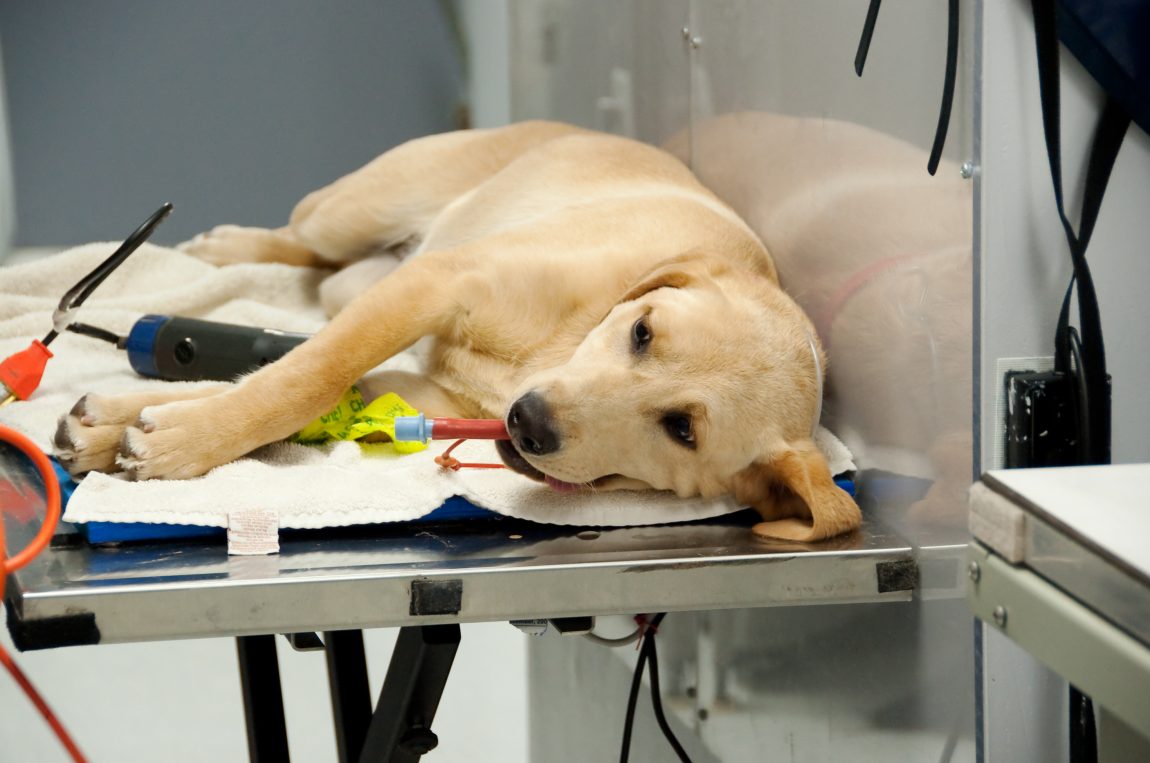
What I Need To Know About Anesthesia for Pets
Hi Everyone! Anesthesia is by far and away the most common and greatest fear my clients have when their pets have to undergo a procedure. I had to assure my sister Carrie every day for a week leading up to Newman’s neuter that he was going to be fine. And I can guarantee my clients would do the same thing if they felt as comfortable with me as my sister does. This is a real fear for my clients and sometimes that fear leads to necessary procedures not being performed. So, I wanted to take some time to try and ease some of your fears and prepare you to ask your veterinarian the right questions regarding anesthesia. Like human medicine, anesthesia is always a risk. However, there have been some recent and amazing advances in both the drugs and the anesthetic techniques that are making anesthesia much safer for our pets. With the right precautions, monitoring, and anesthetic techniques, our pets can undergo dental cleanings, surgeries and other procedures with relative ease.
Anesthesia for Pets – What To Know Before Surgery
How has anesthesia changed?
The most up-to-date method of use for general anesthesia is through intravenous injection of induction drugs, such as Propofol. Prior to the use of injections, pets were placed under anesthesia with gas alone, which was unpredictable and not always safe. Induction intravenous drugs are a more controlled way of placing animals under anesthesia. The drugs help pets go to sleep easily before they are placed on a breathing tube and maintained with anesthesia gas.
Using pain relief drugs before (known as pre-emptive analgesia) as well as during surgery has made anesthesia safer. Reducing pain helps reduce the volume of gas anesthesia needed during a procedure. It also gives your pet more comfort after the procedure, which can help them to a quicker recovery. Veterinarians can provide pain relief through injections, skin patches, epidurals, constant rate infusions, and regional blocks.
What questions to ask before your pet’s procedure?
Before my patients have a procedure that requires anesthesia, I always educate them about my pre-anesthetic assessment, the drugs that we use, the precautions and monitoring used while under anesthesia, the risks and emergency protocols we have in place, and the recovery procedures. Even when I have clients that do not seem worried about anesthesia, I always like to assure them of everything we do. It is important to know that your veterinarian is utilizing the most up-to-date and advanced techniques available. Here are some questions to ask your veterinarian before your pet goes under anesthesia:
Will my pet get a pre-anesthetic assessment?
No matter what your pets age, they should have lab work to assess kidney, liver and bone marrow function. Abnormalities could indicate a bacterial or viral infection or other conditions that would make your pet a poor candidate for anesthesia. Your veterinarian may modify anesthetic protocols, and/or cancel the procedure if abnormalities are detected on lab work. In addition to lab work, a thorough physical examination with stress on listening to your pets heart and lungs should be performed prior to anesthesia.
Will my pet be induced intravenously?
In the past, it was common for pets to be “masked asleep” with gas. This can lead to your pet becoming stressed and an uncontrolled induction of anesthesia. As discussed prior, pets should be induced with IV drugs, such as Propofol, for a smooth and safe induction.
Will my pet receive intravenous fluids while he’s anesthetized?
Yes. Low blood pressure and dehydration can be side effects of anesthesia and the use of IV fluids helps to prevent those issues.
How will my pets be monitored under anesthesia?
All our pets that are under anesthesia at my animal hospital are monitored with a pulse oximeter. This is a machine which measures their oxygen levels, pulse, respiration rate, and CO2 levels. Additionally, your pets blood pressure is monitored, which provides important information about the animal’s condition while under anesthesia. We also have our pets attached to an ECG, which monitors their heart rate and checks for abnormal heart rhythm. Ask your veterinarian what they use to monitor pets under anesthesia.
Will my pet be kept warm during and after surgery?
A pet’s body temperature should be monitored before, during, and after anesthesia to make sure they are staying warm. Pets can become cold during anesthesia and surgery. Maintaining their body temperature with warmed blankets or heating pads keeps them comfortable and helps the body process pain drugs more effectively.
What measures do you have in place in case there is an emergency?
All our pets have emergency drugs calculated and available in case of emergency. In addition we have a crash cart on standby. Although not common, it is important to be ready in case there is an emergency.
Our number one priority is always to keep your pet safe and healthy. Anesthesia does have its risks, but with the proper precautions, monitoring, and techniques, your veterinarian can help lower the risks. I assure my clients that the benefits of any procedure I am recommending far outweigh the risks of anesthesia. Ask your veterinarian what their protocols are so you can feel safe and comfortable with your pet going under anesthesia.





